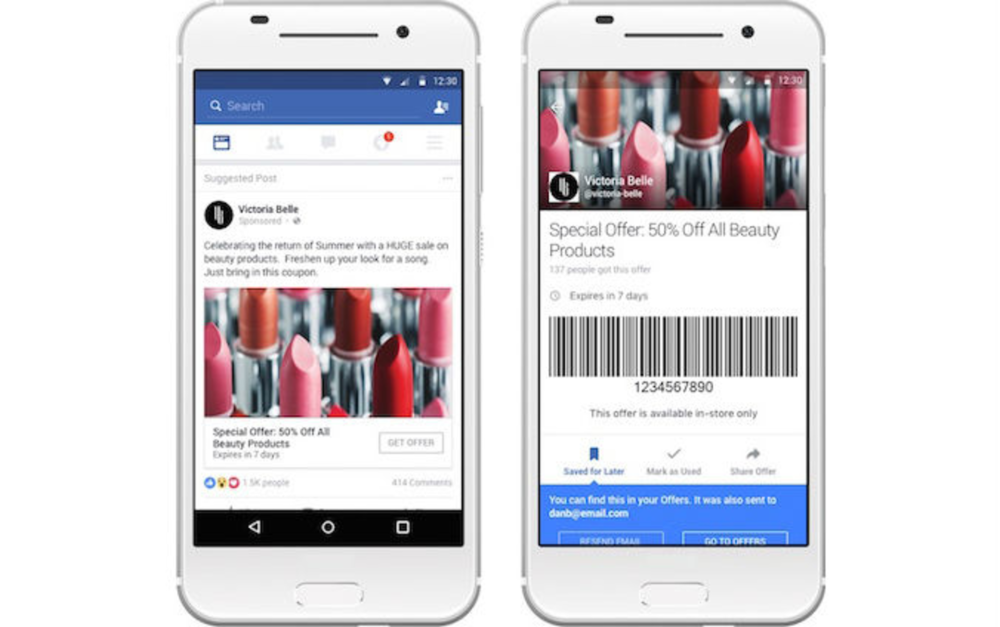Facebook is making it easier for shoppers to go from tap to transact. This week the social network announced updates to its Facebook Offers program and debuted pre-fetching—a way to pre-load mobile content into its in-app browser and cut back on load time.
As TechCrunch notes, Facebook first introduced Facebook Offers in 2012. It was originally presented as a way for businesses to publish discounts and promotions on their Facebook Page. Consumers would see these offers from Pages they’d like in their News Feed, according to ZDNet, and advertisers could promote them via Sponsored Stories. People could redeem these offers by clicking on “Get Offer” and having Facebook send them the offer via email or their mobile device.
The updated version of Offers is more apt for mobile and allows advertisers to be more targeted. According to Facebook’s official announcement, advertisers can now create two types of Offers—one for online purchases and one for in-store purchases. An online offer might contain a promotional code while an in-store offer might contain a specific barcode or QR code. Advertisers can then share these Offers via Page posts or Offers ads.
If an advertiser posts an Offer on its Page, that Offer will be visible to anyone who visits that Page. Consumers can also click on the new Offers tab within the Page to see all of the Offers the advertiser has posted. If a business shares an Offer via an ad, that ad will show up in people’s News Feeds. Advertisers promoting online Offer ads can also target specific audiences.
To claim an Offer, consumers can click the “Get Offer” button and have it automatically save to Facebook’s new Offers bookmark. Shoppers can revisit this bookmark to review and access saved Offers. Facebook will also send notifications to remind them of Offers they’ve saved or alert them when ones are about to expire.
Then, to apply an Offer to a purchase, consumers can simply visit the Offers bookmark and either copy and paste the promotional code before checking out online, or pull up a bar or QR code at the in-store register, depending on how it’s designed, Facebook states. Advertisers will also be able to track how many offers have been redeemed through Facebook’s reporting—enhancing the social network’s accountability for driving sales through its ad products.
But, there’s a caveat: At this time, advertisers cannot present different segments with different Offers on Facebook. In other words, the social network says that it can only provide one type of promotional code or one type of barcode. And while this works well for advertisers looking to expand their reach, Facebook states, it also isn’t ideal for businesses aiming to offer different value to different customers or avoid mass distribution. The company says that it’s working on unique offer code capabilities, which will be “coming soon.”
In addition to updating its Offers capability, Facebook introduced pre-fetching. According to the social network, pre-fetching allows Facebook to download content prior to a link or call-to-action being clicked on. So when a customer does tap the link, the content is presented more rapidly—sometimes slicing mobile site load time by 29% (or 8.5 seconds), according to Facebook’s internal data. The social network says that this enhancement will not only improve the user experience but also decrease the likelihood of cart abandonment.
However, it also warns that this capability can impact advertisers’ metrics. Facebook says businesses that manually implement third-party click tags within their ads’ Web URLs might experience what appears to be an increase in clicks. Publishers can also experience what seems to be an increase in traffic. To be able to differentiate pre-fetched clicks from regular ones, Facebook advises marketers to include a specific header with HTTP requests, which they can find here.





